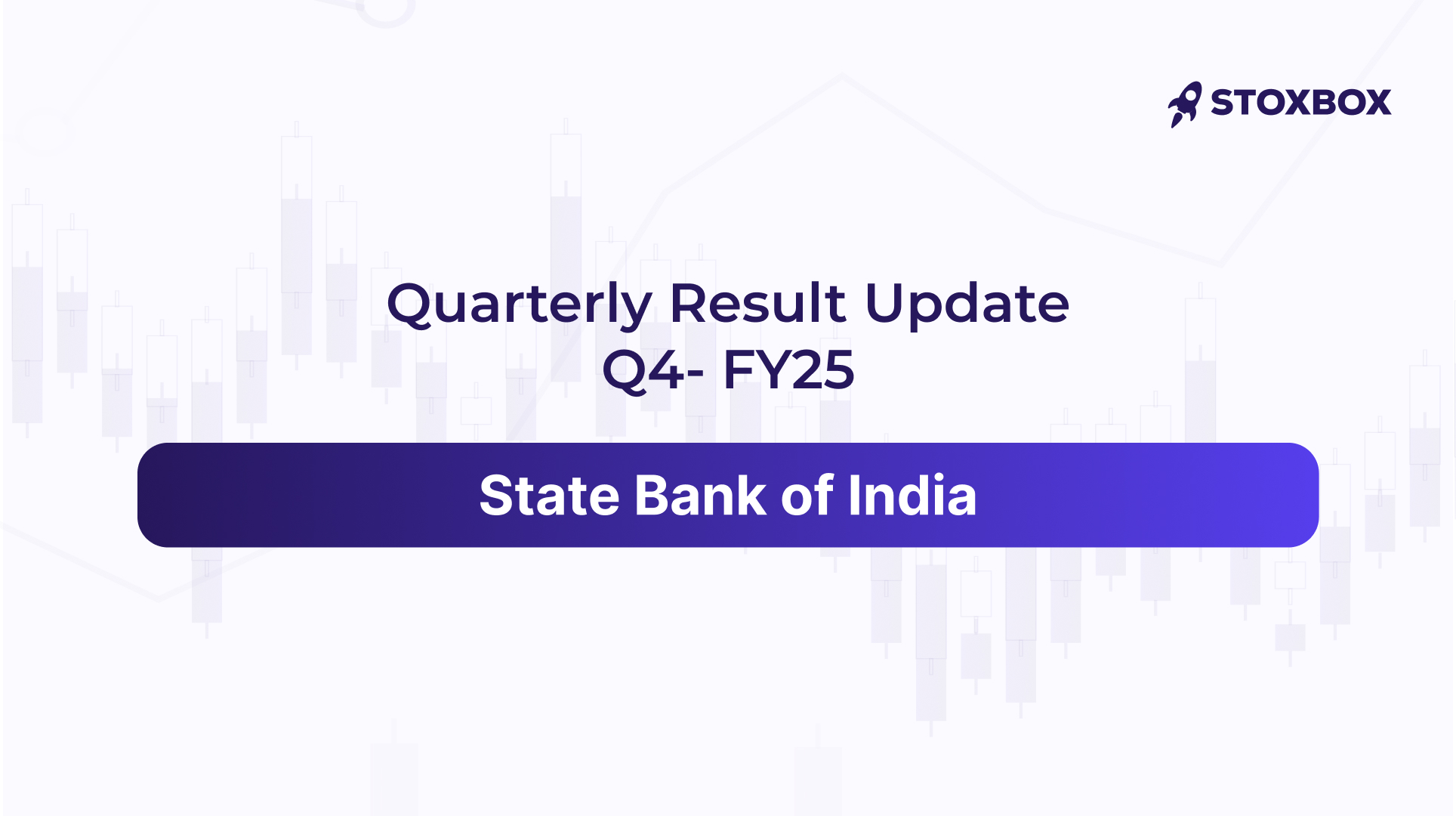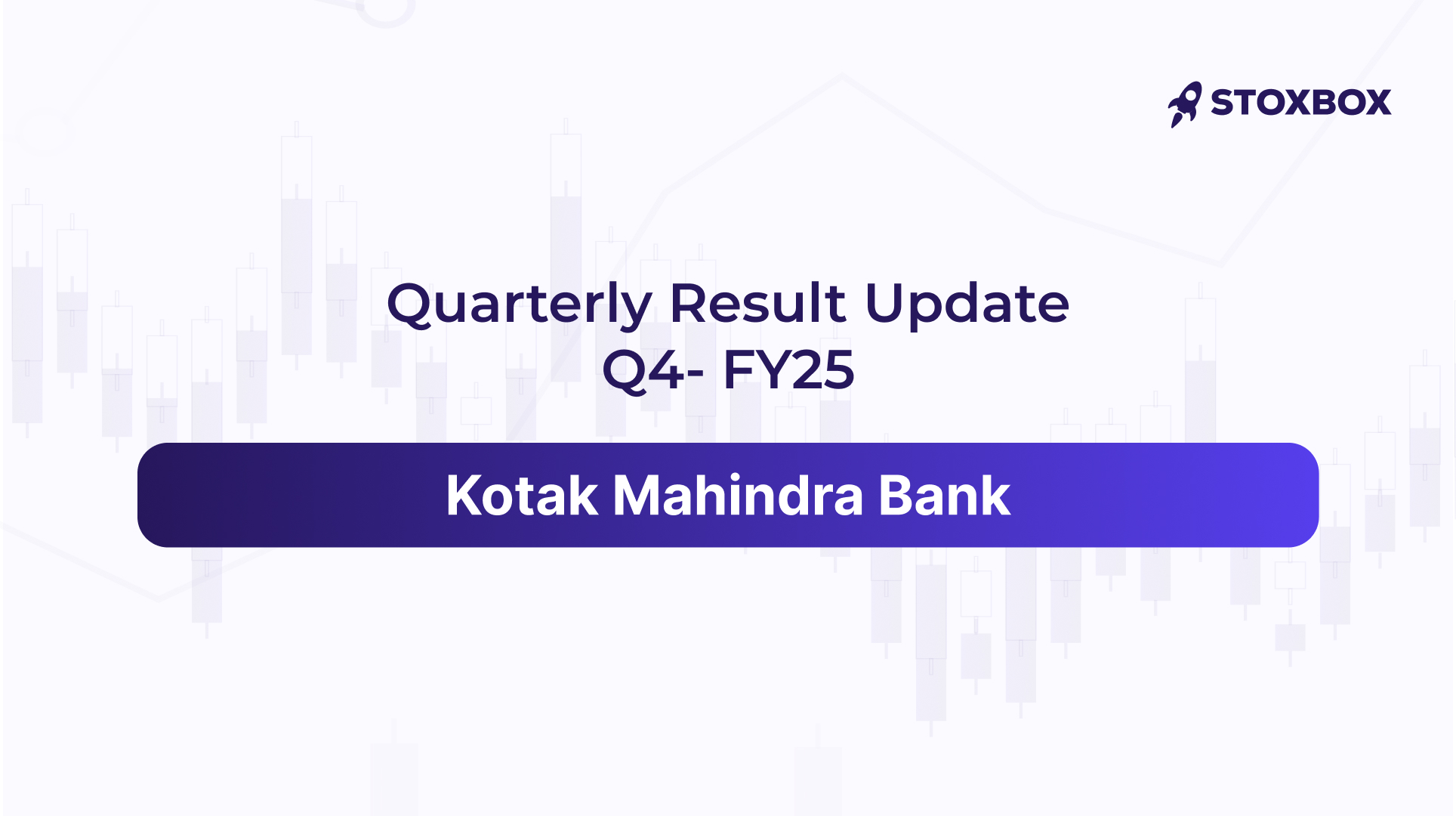Home » Financial News Hotbox » Results » State Bank of India – Q4FY25 Result Update
Sector Outlook: Positive
Steady quarter with margin stability:
SBIN has prioritized liability franchises and improved underwriting standards. The bank has taken a Board approval for a capital raise amounting to Rs. 250bn with a period validity of 12 months. This resolution is for augmenting CET-1 capital and SBIN does not need immediate growth capital but will raise capital as and when the environment is conducive. Advances and deposits Advances growth stood at 12% YoY, driven by growth across all segments. The domestic CD ratio is sufficient for future growth requirements. Total deposits grew by 9.5% YoY, with robust growth in Term deposits and continued strong Current Account (CA) growth. The domestic CD ratio stood at 69.7%. PCR remains strong at 74.4%. The bank has completely revamped the whole part of extending Xpress credit, but growth will come back as the credit profile of borrowers will improve mainly due to revised tax norms. Moderation in treasury yields will help the market to perform better. With the rate cycle moderating, yields will go down, and hence the bank will be positive both on the MTM and treasury fronts. Yields, Margins, and Opex SBIN aims to reduce the cost-to-income ratio, with focus on improving income levels. Domestic NIMs stood at 3.15% in Q4. SBIN expects the NIMs to be under strain, but the impact will be lower as out of the total loans, 29% of the loans are EBLR-linked. Factoring in another 50bps rate cut and with certain levers on the cost front, SBI expects some moderation in NIMs. Employee expenses: SBIN takes majority of the employee provisions on account of PLI in Q4 (an annual phenomenon). Sequential increase in miscellaneous income is on account of Rs. 13.4bn of dividend income. Asset Quality Bank has got Rs. 33bn recovery from a large account, out of which 15% i.e. Rs. 5bn is shown as NPA reduction, and the remaining has gone into the treasury. Slippage ratio stood at 0.55% and credit cost at 0.38%. Net NPA improved by 10bps, with improved PCR at ~74%. NARCL pool: SBIN has transferred a pool of Rs. 1.5tn to NARCL. Recovery from written-off pool: SBIN is having these recoveries from small accounts and not lumpy accounts. It has strengthened its recovery process. Other Highlights ROE to be maintained above +15% across business cycles. SA rate cut: SBIN does not aim to cut SA rate any further. It expects some re-adjustment on term deposit in short-tenor loans. Branch additions overseas: The US and Bahrain are the geographies having local credit demand. The ECB business is largely done in Gift-City, Dubai and Hongkong and SBIN is extensively using GIFT-city due to tax benefits.
Key Concall Highlights
Key Concall Highlights
- SBIN has prioritized liability franchises and improved underwriting standards.
- The bank has taken a Board approval for a capital raise amounting to Rs. 250bn with a period validity of 12 months. This resolution is for augmenting CET-1 capital and SBIN does not need immediate growth capital but will raise capital as and when the environment is conducive.
Advances and deposits
- Advances growth stood at 12% YoY, driven by growth across all segments. The domestic CD ratio is sufficient for future growth requirements.
- Total deposits grew by 9.5% YoY, with robust growth in Term deposits and continued strong Current Account (CA) growth.
- The domestic CD ratio stood at 69.7%. PCR remains strong at 74.4%.
- The bank has completely revamped the whole part of extending Xpress credit, but growth will come back as the credit profile of borrowers will improve mainly due to revised tax norms.
- Moderation in treasury yields will help the market to perform better. With the rate cycle moderating, yields will go down, and hence the bank will be positive both on the MTM and treasury fronts.
Yields, Margins, and Opex
- SBIN aims to reduce the cost-to-income ratio, with focus on improving income levels.
- Domestic NIMs stood at 3.15% in Q4. SBIN expects the NIMs to be under strain, but the impact will be lower as out of the total loans, 29% of the loans are EBLR-linked.
- Factoring in another 50bps rate cut and with certain levers on the cost front, SBI expects some moderation in NIMs.
- Employee expenses: SBIN takes majority of the employee provisions on account of PLI in Q4 (an annual phenomenon).
- Sequential increase in miscellaneous income is on account of Rs. 13.4bn of dividend income.
Asset Quality
- Bank has got Rs. 33bn recovery from a large account, out of which 15% i.e. Rs. 5bn is shown as NPA reduction, and the remaining has gone into the treasury.
- Slippage ratio stood at 0.55% and credit cost at 0.38%.
- Net NPA improved by 10bps, with improved PCR at ~74%.
- NARCL pool: SBIN has transferred a pool of Rs. 1.5tn to NARCL.
- Recovery from written-off pool: SBIN is having these recoveries from small accounts and not lumpy accounts. It has strengthened its recovery process.
Other Highlights
- ROE to be maintained above +15% across business cycles.
- SA rate cut: SBIN does not aim to cut SA rate any further. It expects some re-adjustment on term deposit in short-tenor loans.
- Branch additions overseas: The US and Bahrain are the geographies having local credit demand. The ECB business is largely done in Gift-City, Dubai and Hongkong and SBIN is extensively using GIFT-city due to tax benefits..
Valuation and Outlook
State Bank of India (SBI), the country’s largest public sector bank, delivered a subdued performance in Q4FY25, with elevated provisions weighing on profitability. While we had anticipated 14% credit growth in FY25 amid a growing share of unsecured loans, the bank missed this target. For FY26, SBI has guided for a slower credit growth of 12–13%, which trails industry expectations. Margins remained under pressure due to the prevailing interest rate environment, and management has indicated that margin compression will likely continue into FY26, though the quantum of decline was not specified. However, asset quality was a bright spot in the quarter. SBI reported improvements across key indicators like Gross and Net NPAs, and also saw strong recoveries, even in the unsecured retail segment which has been under scrutiny. This suggests the credit portfolio is strengthening. Overall, while the outlook on growth and margins remains conservative, the steady improvement in asset quality provides some comfort. We remain watchful but maintain a positive bias going into FY26.
Your Wealth-Building Journey Starts Here

You might also Like.
Auto Wholesales Update – May 2025
Export momentum continues to remain strong despite domestic softness The...
Kotak Mahindra Bank – Q4FY25 Result Update
Sector Outlook: Positive Net Profit Declines 14% YoY on Elevated...


